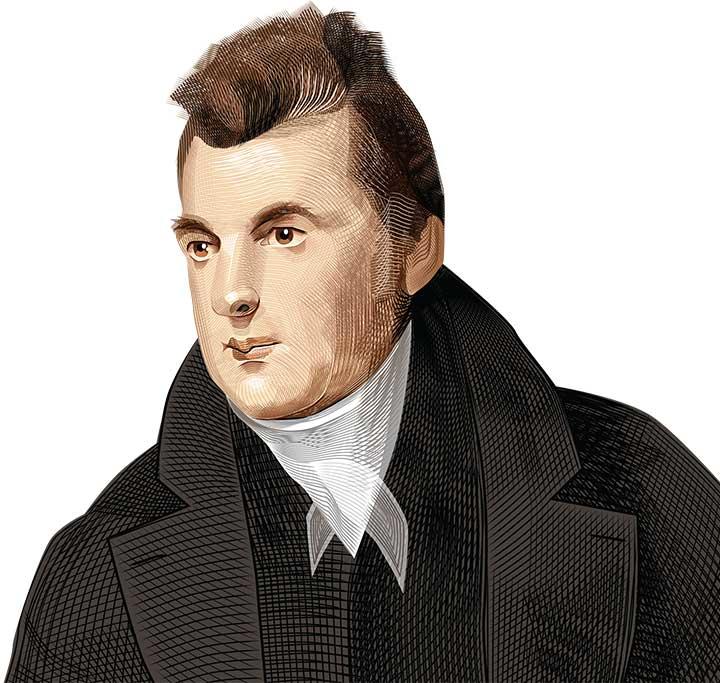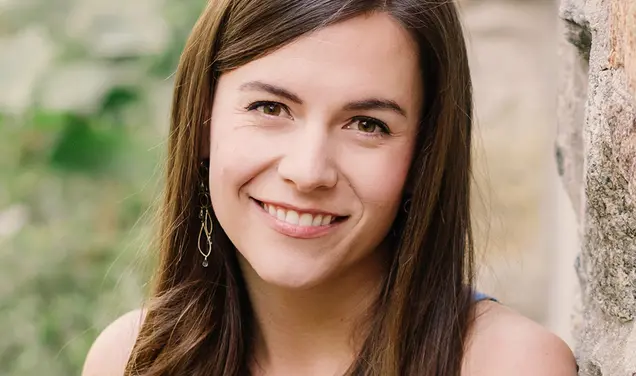On July 11, 1804, as Alexander Hamilton and Aaron Burr 1772 stood across from each other on a ledge in Weehawken, N.J., Dr. David Hosack 1789 waited below, on the shore of the Hudson River. Though Hosack was present at Hamilton’s request, dueling was still illegal, so the doctor had to profess ignorance of the duel or risk prosecution.
When he heard the shots, and moments later, the cries for help, Hosack raced up the ledge and found Hamilton on the ground. Burr’s bullet had shattered one of Hamilton’s ribs, tore through his liver and diaphragm, and splintered a vertebra; under Hosack’s care, Hamilton died 31 hours later. But Hosack’s involvement in the most infamous duel in American history overshadowed his role as a leading American physician and botanical pioneer.
A New York native, Hosack attended Columbia College until 1788, when an angry mob, apparently disturbed by the medical profession’s practice of robbing graves for instructional cadavers — and, in particular, the sight of a medical student waving a cadaver’s severed arm out a window — stormed one of the college’s laboratories. In the chaos, a rock struck Hosack in the head. In search of a calmer atmosphere, Hosack transferred to the College of New Jersey.
Disturbed by the sight of a medical student waving a cadaver’s severed arm out a window, a mob stormed one of the college’s libraries.
After graduating, and then completing his medical doctorate at the University of Pennsylvania in 1791, Hosack traveled to the University of Edinburgh to learn from leading medical practitioners. There, he also became impressed with European advances in botany. Returning in 1794, Hosack established a prominent medical practice in New York, eventually befriending Hamilton.
In 1801, Hosack founded the Elgin Botanic Garden in what became midtown Manhattan. The first botanical garden in the United States, it occupied 20 acres and contained 1,500 species of American plants and 1,000 minerals from England. Hosack’s institution served as a valuable, if fleeting, scientific resource for the young republic.
By 1810, Hosack could no longer afford to maintain Elgin. He sold the gardens to the state of New York, which later gave the property to Columbia; the gardens were thereafter abandoned. In 1929, Columbia leased the land to John D. Rockefeller Jr. for the construction of Rockefeller Center. Radio City Music Hall was built on the former site of Hosack’s conservatory.
With the collapse of his botanical dream, Hosack’s collections required a new home. In 1818, Hosack donated his mineral collection to the College of New Jersey, providing an early foundation for the geology department. A rock in the head had sent him to Old Nassau; this time he sent Princeton a cabinet of rocks.











2 Responses
stevewolock
5 Years AgoFor the Record
The March 18 Princeton Portrait of David Hosack, Class of 1789, drew on material from Victoria Johnson’s biography American Eden: David Hosack, Botany, and Medicine in the Garden of the Early Republic (Norton & Co.), a 2018 National Book Award nominee.
Daniel J. Kevles ’60 *64
5 Years AgoHosack’s Influence
I was delighted to see the PAW call attention to the physician David Hosack, Class of 1789 (“The Duel Doctor in Weehawken,” by Harrison Blackman ’17, March 18). Hosack was a leading pioneer in the scientific medicine and natural history of his day, long engaged with Jefferson, Burr, and the Peales, among others, a civic as well as medical and botanical builder in post-Revolutionary New York. Your readers might want to savor his full life in Victoria Johnson’s American Eden: Botany and Medicine in the Garden of the Early Republic (Liveright, 2018), a rich, compelling biography (and obviously an indispensable source for Blackman) that was a finalist for the National Book Award in nonfiction and the Pulitzer Prize in history.